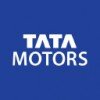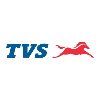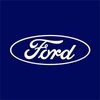Filter interviews by
Force Motors Interview Questions and Answers
114 Interview questions
Training feedbacks are essential for evaluating the effectiveness of training programs and improving future sessions.
Feedback helps identify strengths and weaknesses of the training content.
Example: Post-training surveys can reveal if participants found the material engaging.
Constructive feedback can guide trainers in refining their delivery methods.
Example: If multiple participants mention a lack of clarity in a ...
I am familiar with various LMS tools that enhance training and development through effective content delivery and tracking.
Moodle: An open-source LMS widely used in educational institutions for its flexibility and extensive plugin options.
Adobe Captivate: A tool for creating interactive e-learning content, often integrated with LMS for tracking learner progress.
TalentLMS: A cloud-based platform that offers user-fr...
Assessing training effectiveness involves various methods and tools to measure knowledge retention and application in the workplace.
Kirkpatrick's Four-Level Training Evaluation Model: Measures reaction, learning, behavior, and results.
Pre- and post-training assessments: Evaluate knowledge before and after training sessions.
Surveys and feedback forms: Collect participant feedback on training relevance and delivery.
...
My strategy for Training Needs Identification (TNI) focuses on thorough assessment, stakeholder engagement, and continuous evaluation.
Conduct regular assessments through surveys and interviews to identify skill gaps.
Engage with department heads to understand specific training needs relevant to their teams.
Utilize performance reviews to pinpoint areas where employees require additional training.
Implement pilot trai...
Emergency supply changeover ensures seamless power transition from main supply to diesel generator (DG) during outages.
Automatic Transfer Switch (ATS) detects power failure and initiates changeover.
DG starts up within seconds to provide backup power.
Load shedding may occur to prioritize critical systems.
Regular maintenance of DG is essential for reliability.
Example: Hospitals use DGs to ensure life-support systems...
Power factor measures the efficiency of electrical systems, crucial for reducing energy costs and improving system performance.
Power factor (PF) is the ratio of real power (kW) to apparent power (kVA) in a circuit.
A PF of 1 (or 100%) indicates all power is used effectively; lower values indicate inefficiencies.
Industries aim for a PF close to 1 to minimize energy costs and avoid penalties from utility companies.
Ex...
Spot welding guns are essential tools in robotic welding systems, ensuring precise and efficient metal joining.
Spot welding guns use electrical resistance to join metal parts by melting the surfaces at the contact point.
Robotic spot welding systems enhance production speed and consistency in automotive manufacturing.
Examples include the use of spot welding guns in assembling car bodies, where multiple welds are pe...
A transformer is an electrical device that transfers electrical energy between circuits through electromagnetic induction.
Transforms voltage levels: Steps up or steps down voltage for efficient power transmission.
Consists of primary and secondary coils: The primary coil receives input voltage, while the secondary coil delivers output voltage.
Used in power distribution: Essential for transmitting electricity over l...
A sensor is a device that detects and responds to physical stimuli, converting them into signals for monitoring or control.
Sensors can measure temperature, pressure, light, and motion.
Examples include thermocouples for temperature and accelerometers for motion.
They are widely used in automation, robotics, and environmental monitoring.
Sensors can be analog or digital, depending on the type of output they provide.
Engine testing evaluates performance, efficiency, and emissions to ensure reliability and compliance with standards.
Conduct bench tests to measure power output and torque under various conditions.
Perform durability testing by running the engine for extended periods to assess wear and tear.
Use dynamometers to simulate real-world driving conditions and gather performance data.
Evaluate emissions using specialized equ...
Force Motors Interview Experiences
129 interviews found
I appeared for an interview in Feb 2025.
Everything should be accomplished collaboratively within a group.
Regardless of the task, it must be completed.
It is a comprehensive and detailed investigation of an individual, group, organization, event, or situation, carried out in a real-world context to derive generalizations and new insights.
(3 Questions)
- Q1. There are no questions
- Q2. There are no questions
- Q3. There is no question
Interview Preparation Tips
(2 Questions)
- Q1. How do is Engine testing
- Ans.
Engine testing evaluates performance, efficiency, and emissions to ensure reliability and compliance with standards.
Conduct bench tests to measure power output and torque under various conditions.
Perform durability testing by running the engine for extended periods to assess wear and tear.
Use dynamometers to simulate real-world driving conditions and gather performance data.
Evaluate emissions using specialized equipmen...
- Q2. How do yo PDF finally
Interview Preparation Tips
I am jitendra prajapati 26 years old.My living Village Barodiya vaman Khurai Sagar mp. and crent location mandideep Bhopal and recently job TAFE motors tractor limited Eicher mandideep Bhopal and post DMR DET.my Diploma pass out 2022 years.
Job Rol Dipartment Q.M.G. Dyna Testing (PTO testing) CQA Audit,CRA Audit, Process Audit, and Yard Audit.
I appeared for an interview in Nov 2024.
(2 Questions)
- Q1. Force all vehicle working
- Q2. Eny complete the vehicle ok
(2 Questions)
- Q1. Timing chain, gear box, grown setting
- Q2. Driving wheel greaseing
Interview Preparation Tips
(3 Questions)
- Q1. What is your name
- Q2. Diesel engine our pritrol engine me different
- Ans.
Diesel engines and petrol engines differ in fuel type, combustion process, efficiency, and applications.
Fuel Type: Diesel engines use diesel fuel, while petrol engines use gasoline.
Combustion Process: Diesel engines rely on compression ignition, whereas petrol engines use spark ignition.
Efficiency: Diesel engines are generally more fuel-efficient than petrol engines, making them suitable for heavy-duty applications.
App...
- Q3. Two strok our four stroke me different
- Ans.
Two stroke engines have a power stroke every two strokes, while four stroke engines have a power stroke every four strokes.
Two stroke engines have a simpler design with fewer moving parts.
Four stroke engines are more fuel efficient and produce less pollution.
Examples: Two stroke engines are commonly used in chainsaws and dirt bikes, while four stroke engines are found in cars and motorcycles.
(2 Questions)
- Q1. Engine ki paridhasa
- Q2. What is kaizen kise kahte hai
- Ans.
Kaizen is a Japanese philosophy focused on continuous improvement in processes, efficiency, and quality in various fields.
Originates from Japan, emphasizing small, incremental changes.
Involves all employees, from management to workers, in the improvement process.
Example: A factory team regularly meets to discuss ways to reduce waste in production.
Focuses on improving productivity, quality, and safety.
Utilizes tools lik...
I applied via Naukri.com and was interviewed in Nov 2024. There was 1 interview round.
(2 Questions)
- Q1. How to work Exhaust system ?
- Ans.
The exhaust system directs engine gases away, reduces noise, and minimizes emissions for optimal vehicle performance.
Components include the exhaust manifold, catalytic converter, muffler, and tailpipe.
The exhaust manifold collects gases from the engine cylinders and directs them to the catalytic converter.
The catalytic converter reduces harmful emissions by converting them into less harmful substances.
The muffler minim...
- Q2. Doc ,DPF,SCR,explain
Interview Preparation Tips
I applied via Approached by Company and was interviewed in Oct 2024. There was 1 interview round.
(2 Questions)
- Q1. How to work hydrolic
- Ans.
Hydraulic systems use fluid to transmit power and are commonly found in machinery and equipment.
Understand the basic principles of hydraulic systems, including Pascal's Law and how pressure is transmitted through a confined fluid.
Learn how to operate hydraulic equipment safely, including proper use of controls and understanding potential hazards.
Regularly inspect hydraulic systems for leaks, damage, or other issues tha...
- Q2. Difference between pneumatic and hydrolic
- Ans.
Pneumatic systems use compressed air to transmit power, while hydraulic systems use fluid (usually oil) to transmit power.
Pneumatic systems use compressed air as the medium for power transmission.
Hydraulic systems use fluid (usually oil) as the medium for power transmission.
Pneumatic systems are typically used in lighter applications, such as air brakes in vehicles.
Hydraulic systems are used in heavier applications, su...
Interview Preparation Tips
- Defending of candidate experienc
(1 Question)
- Q1. Different between four stroke engine and two stroke engine
- Ans.
Four stroke engines have separate intake, compression, power, and exhaust strokes, while two stroke engines combine intake and exhaust in one stroke.
Four stroke engines have valves for intake and exhaust, while two stroke engines use ports
Four stroke engines are more fuel efficient and produce less pollution
Two stroke engines have simpler design and are lighter in weight
Examples: Four stroke - car engines, Two stroke -...
(2 Questions)
- Q1. Randomly asked questions about purchase
- Q2. Randomly
(2 Questions)
- Q1. What is beam loading
- Ans.
Beam loading refers to the distribution of forces and moments acting on a beam.
Beam loading includes both the external loads applied to a beam and the internal reactions within the beam.
Types of beam loading include point loads, distributed loads, and concentrated moments.
Understanding beam loading is crucial for designing beams that can support the expected loads without failing.
Examples of beam loading scenarios incl...
- Q2. Draw force diagrame
I applied via Naukri.com and was interviewed in Mar 2024. There were 3 interview rounds.
Mechanics
Som
Tom
Dom
Turbo
Fluid
Material
(4 Questions)
- Q1. Basic drawing all
- Q2. Materials som Mechanics all basics
- Q3. Hmt hvac all basics
- Q4. Material property ion carbon diagram
- Ans.
Material property ion carbon diagram is a graphical representation of the relationship between material properties and carbon content.
Material property ion carbon diagram shows how material properties change with varying carbon content.
Common material properties include hardness, strength, and ductility.
Examples of materials that exhibit changes in properties with carbon content include steel and cast iron.
(2 Questions)
- Q1. Acceptation quality strength
- Q2. Introduction and background your family
Interview Preparation Tips
Top trending discussions






Force Motors Interview FAQs
The duration of Force Motors interview process can vary, but typically it takes about less than 2 weeks to complete.
Tell us how to improve this page.
Force Motors Interviews By Designations
- Force Motors Graduate Engineer Trainee (Get) Interview Questions
- Force Motors Senior Engineer Interview Questions
- Force Motors Diploma Trainee Engineer Interview Questions
- Force Motors Assistant Manager Interview Questions
- Force Motors Design Engineer Interview Questions
- Force Motors Production Engineer Interview Questions
- Force Motors Junior Engineer Interview Questions
- Force Motors Engineer Interview Questions
- Show more
Interview Questions for Popular Designations
- Graduate Engineer Trainee (Get) Interview Questions
- Design Engineer Interview Questions
- Senior Engineer Interview Questions
- Diploma Trainee Engineer Interview Questions
- Assistant Manager Interview Questions
- Production Engineer Interview Questions
- Junior Engineer Interview Questions
- Sales Officer Interview Questions
- Show more
Overall Interview Experience Rating
based on 115 interview experiences
Difficulty level
Duration
Interview Questions from Similar Companies
Force Motors Reviews and Ratings
based on 1.9k reviews
Rating in categories
|
Junior Engineer
572
salaries
| ₹2 L/yr - ₹5.8 L/yr |
|
Engineer
407
salaries
| ₹3.4 L/yr - ₹7.7 L/yr |
|
Senior Engineer
339
salaries
| ₹5.3 L/yr - ₹12.1 L/yr |
|
Assistant Engineer
277
salaries
| ₹2.5 L/yr - ₹6.3 L/yr |
|
Design Engineer
259
salaries
| ₹3.5 L/yr - ₹8 L/yr |

Tata Motors

Mahindra & Mahindra

Maruti Suzuki

Ashok Leyland
- Home >
- Interviews >
- Force Motors Interview Questions













